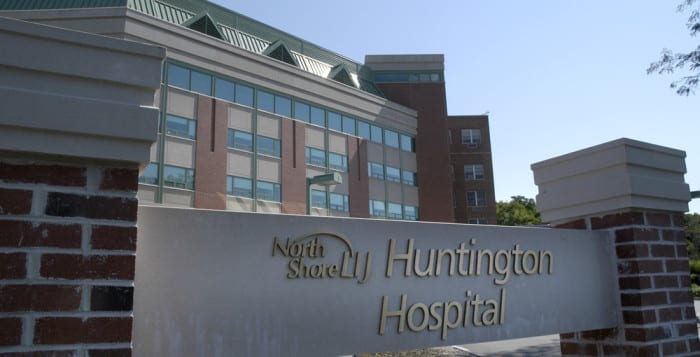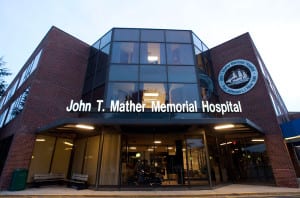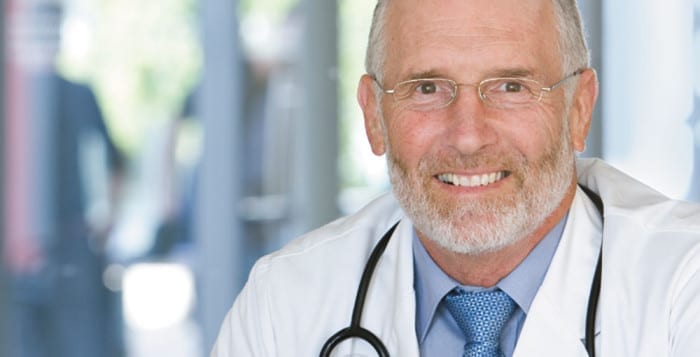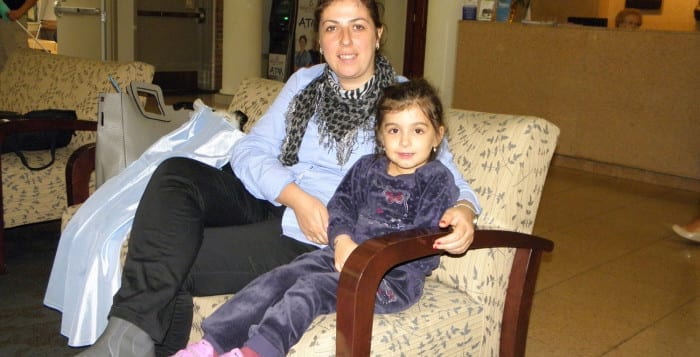Port Jefferson’s St. Charles Hospital will open its new Center for Hyperbaric Medicine & Wound Healing on July 18, as the hospital seeks to help people with chronic, nonhealing wounds.
The center, which will be located on the second floor of the hospital, will include two hyperbaric chambers that provide 100% pure oxygen under pressurized conditions and will have four examining rooms.
The chamber “provides patients with the opportunity to properly oxygenate their blood, which will increase wound healing and wound-healing time,” said Jason Foeppel, a registered nurse and program director for this new service.
Potential patients will be eligible for this treatment when they have wounds that fail to heal after other treatments for 30 days or more.
Residents with circulatory challenges or who have diabetes can struggle with a wound that not only doesn’t heal, but can cause other health problems as well.
More oxygen in people’s red blood cells promotes wound healing and prevents infection.
The treatment “goes hand in hand to deliver aid to the body’s immune system and to promote a healing environment,” Foeppel said.
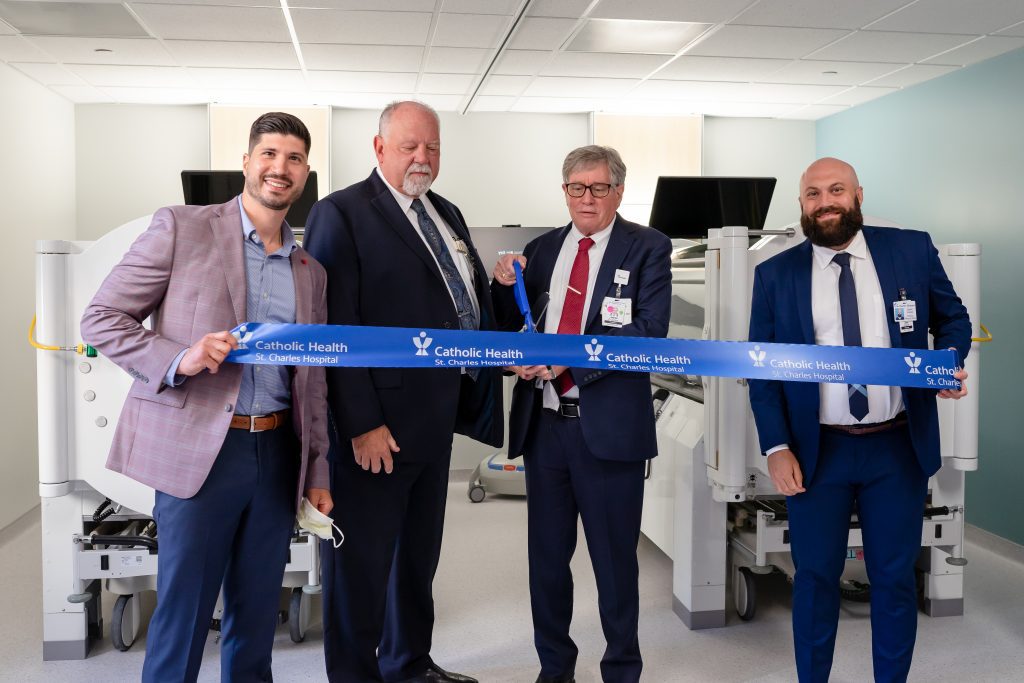
St. Charles is partnering with RestorixHealth in this wound healing effort. A national chain, RestorixHealth has created similar wound healing partnerships with other health care facilities in all 50 states.
The new wound healing center at St. Charles is one of several others on Long Island, amid an increased demand for these kinds of services.
Partnering with Healogics, Huntington Hospital opened a hyperbaric chamber and wound healing center in May 2021. Stony Brook Southampton Hospital also has a wound care center.
“There’s a great need for this in our community,” said John Kutzma, program director at the Huntington Hospital center. “We know that there are 7 million Americans living with chronic wounds,” many of whom did not receive necessary medical attention during the worst of the pandemic, as people avoided doctors and hospitals.
Concerns about contracting COVID-19 not only kept people from receiving necessary treatment, but also may have caused nonhealing wounds to deteriorate for people who contracted the virus.
Although Kutzma hasn’t read any scientific studies, he said that, anecdotally, “We’ve had patients that had COVID whose wounds haven’t healed as quickly as non-COVID patients.”
Patients at the Huntington Hospital center range in age from 15 to 100, Kutzma said. People with diabetes constitute about one-third of the patients.
Treatment plan
For the hyperbaric chamber to have the greatest chance of success, patients typically need daily treatments that last between one and a half to two hours, five days a week for four to six weeks. While the time commitment is significant, Foeppel said it has proven effective in wound healing studies.
“We pitch it as an antibiotic treatment,” he said. “You want to complete that full cycle to ensure the body has enough time to complete the healing process.”
Kutzma said Huntington Hospital reviews the treatment plan with new patients.
In following the extensive treatment protocol to its conclusion, he said, “The alternative is to live with this very painful, chronic wound that may lead to amputation.” Given the potential dire alternative, Huntington Hospital doesn’t “have a problem getting that kind of commitment.”
While the treatment has proven effective for many patients, not everyone is medically eligible for the hyperbaric chamber.
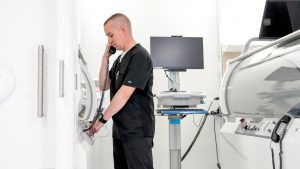
Some chemotherapy drugs are contraindicators for hyperbaric oxygen treatments. Those patients may have other options, such as skin grafts, extra antibiotics or additional visits with physicians for debridement, which involves removing dead, damaged or infected tissue.
“We invite patients to come in, go through the checklist and see what their plan of attack” includes, Foeppel said.
The cost of the hyperbaric treatment for eligible conditions is generally covered by most health insurance plans, including Medicaid and Medicare, he said.
The two hyperbaric chambers at St. Charles can treat eight to 10 patients in a day.
Aside from the cost and eligibility, patients who have this treatment frequently ask what they can do during their treatments. The center has a TV that can play movies or people can listen to music.
“We don’t expect you to sit there like in an MRI,” Foeppel said.
As for complaints, patients sometimes say they have pressure in their ears, the way they would if they ascend or descend in an airplane. The center urges people to hold their nose and blow or to do other things to relieve that pressure.
Foeppel encourages patients to use the restroom before the treatment, which is more effective when people don’t interrupt their time in the chamber.
Prospective patients don’t need a referral and can call the St. Charles center at 631-465-2950 to schedule an appointment.

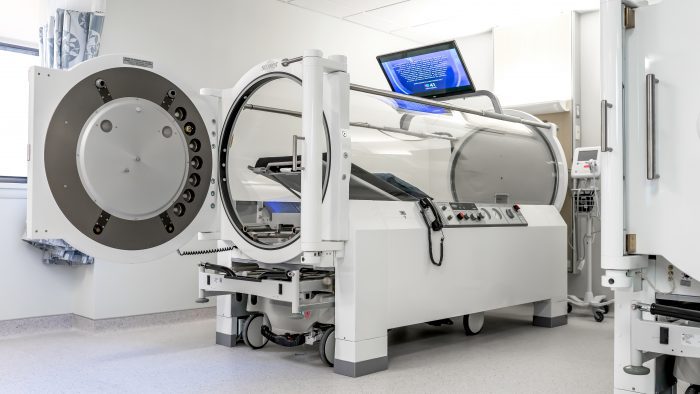
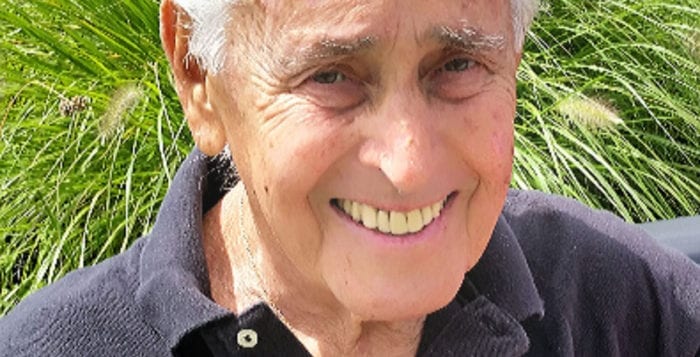
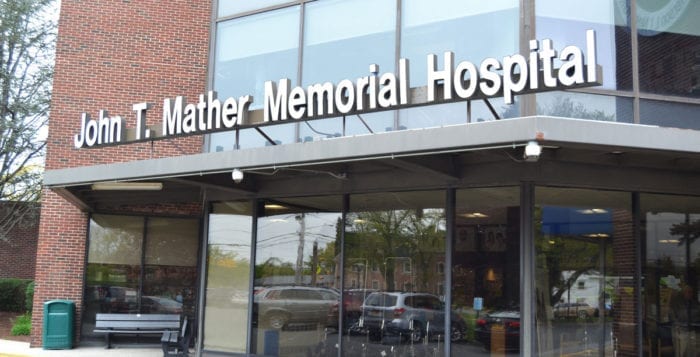
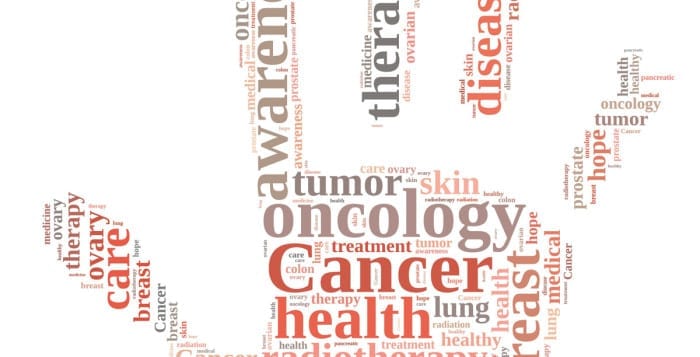
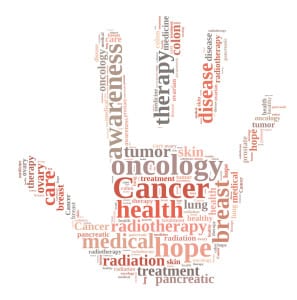 The best treatment plan is a multifaceted approach, said Marco Palmieri, D.O. Palmieri is medical director of the Center for Pain Management at Stony Brook Medicine. “A pretty high percentage” of post-mastectomy patients experience pain, he said. He and his colleagues recommend a well-structured regimen that could include medications, interventional approaches, physical therapy, acupuncture, massage therapy, diet, exercise and, in some cases, treatment by a pain psychologist, Palmieri said.
The best treatment plan is a multifaceted approach, said Marco Palmieri, D.O. Palmieri is medical director of the Center for Pain Management at Stony Brook Medicine. “A pretty high percentage” of post-mastectomy patients experience pain, he said. He and his colleagues recommend a well-structured regimen that could include medications, interventional approaches, physical therapy, acupuncture, massage therapy, diet, exercise and, in some cases, treatment by a pain psychologist, Palmieri said.
